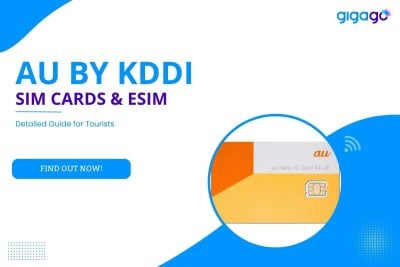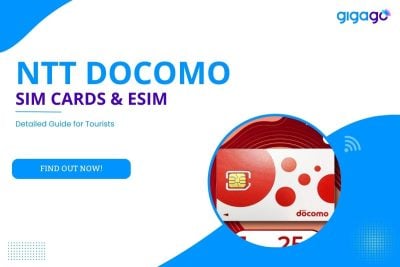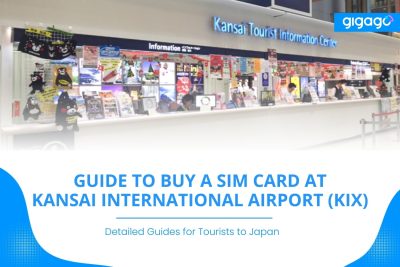This guide is perfect for travelers looking to stay connected without overpaying or getting lost in translation.
Use Cell Phone In Japan for Travelers: How To Do It?
Traveling to Japan and wondering if your cell phone will work there or what options you have to get connected? This comprehensive guide breaks down everything you need to know about use cell phone in Japan.
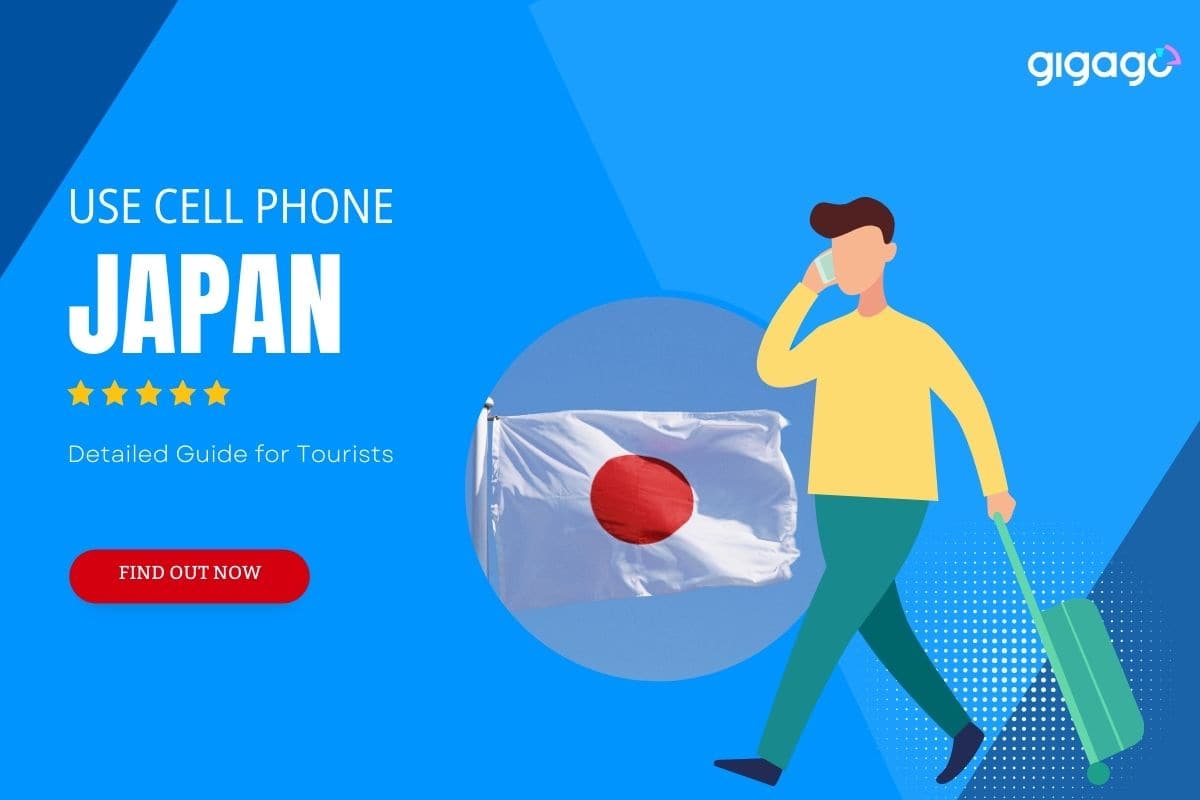
In this article
I. Highlights of Phone Compatibility, Frequencies, and Networks in Japan

Japan uses unique cell phone frequencies and networks that may not be compatible with phones from other regions. Here’s a quick overview:
- Frequencies: Japan uses the 2100MHz and 800MHz bands for 3G networks and the 2100MHz, 1500MHz, and 900MHz bands for 4G LTE networks.
- CDMA vs GSM: Japan uses the CDMA system while most other countries use the GSM system. Some phones support multiple systems.
- Carriers: The main carriers are NTT Docomo, KDDI au, SoftBank, and Rakuten Mobile. MVNOs rent network access.
So if your phone lacks the correct radios and frequencies, you likely won’t get service in Japan without an alternate solution.
II. Will My Cell Phone Work In Japan?
In most cases, your cell phone will work in Japan. iPhone, newer premium Android models, and select unlocked phones have better odds of working abroad. But always research your exact model to confirm compatibility with Japan’s unique networks.
| Provider | 5G Bands | 4G Bands | 3G Bands | 2G Bands |
| KDDI au | n18 (850), n28a (700), n77 (3700), n78 (3500), n257 mmWave (28GHz) | B1 (2100), B3 (1800), B11 (1500), B18 (800), B26 (850), B28a (700), B41 (TDD 2500), B42 (TDD 3500) | - | CDMA BC0 (800), CDMA BC6 (2Ghz) |
| NTT Docomo | n28b (700), n78 (3500), n79 (4700), n257 mmWave (28GHz) | B1 (2100), B3 (1800), B19 (800), B21 (1500), B28b (700), B42 (TDD 3500) | B1 (2100), B9 (1800 Japan), B19 (800) | - |
| Softbank | n3 (1800), n28b (700), n77 (3700), n257 mmWave (28GHz) | B1 (2100), B3 (1800), B8 (900), B11 (1500), B28b (700), B41 (TDD 2500), B42 (TDD 3500) | B1 (2100), B8 (900), B11 (1500) | - |
| Rakuten Movile | n77 (3700), n257 mmWave (28GHz) | B3 (1800), B18 (800) | - | - |
Remember: It's always best to check compatibility and costs before you travel to avoid any surprises on your phone bill, find out How to check if your cell phone works abroad when traveling.
III. Do I Need An International Plan In Japan?
It depends. If you just want to stay connected occasionally for basic things like checking emails and maps, you can probably get by with free Wi-Fi. However, free Wi-Fi has drawbacks:
- Limited availability: Not all restaurants, cafes, or public spaces offer it. You might be stuck offline in some situations.
- Unreliable connection: Free Wi-Fi can be slow or spotty, especially in crowded areas.
- Security concerns: Using public Wi-Fi for sensitive activities like banking is risky.
International plans have some advantages:
- Stay connected always: Make calls, send texts, and use data anywhere in Japan, without worrying about finding Wi-Fi.
- Peace of mind: No surprise charges on your bill when you get back home.
- Convenience: Use your phone just like you do at home, for navigation, translations, and more.
Ultimately, the decision is yours. If you’re a budget traveler who doesn’t mind planning around Wi-Fi availability, you can probably skip the international plan. But if you value convenience, peace of mind, staying connected, and the ability to use cell phone in Japan, an international plan might be worth the investment.
IV. Options To Use Cellphones In Japan For Tourists
As a tourist in Japan, staying connected with your phone can be crucial for navigation, translation, and staying in touch with loved ones back home. But with various options like eSIMs, international SIMs, and pocket Wi-Fi, choosing the right one to use cell phone in Japan can be confusing. Let’s break down each option:
1. eSIM Plan for Japan
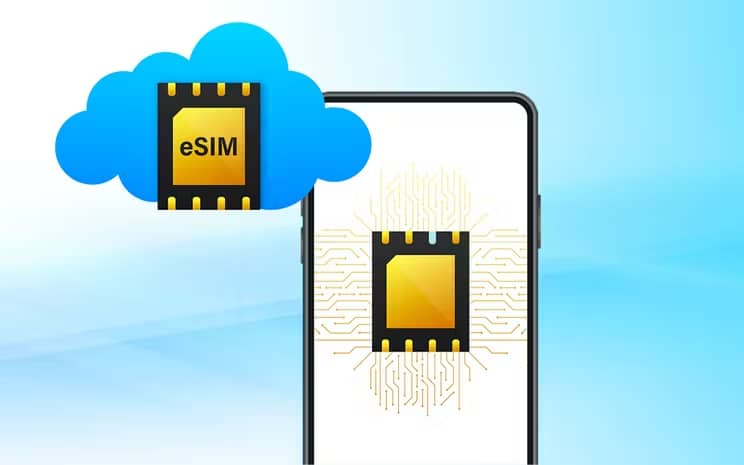
An eSIM is essentially a software-based SIM card downloaded to your phone’s secondary SIM slot. This allows you to use mobile data in Japan while keeping your regular SIM card active.
Suitable for: Phones with dual SIM or eSIM capability. Allows using data on your regular number.
Where to buy eSIM for Japan: Popular provider is GIGAGO. Prices start around $7 USD for 1GB data.
- Pros: Convenient, virtual, easy to activate directly on your phone.
- Cons: Requires phone compatibility, limited availability in Japan compared to other options, might have shorter validity periods.
So while less convenient to set up, an eSIM offers more flexibility if your device supports it.
2. International SIM card for Japan

A Japan SIM card refers to an international prepaid nano-SIM you physically insert into your phone’s SIM card slot. This connects you directly to local cell networks during your trip.
Carriers also offer visitor prepaid SIMs. Visit SIM card shops at the airport or in tech districts. Prices start around $15 USD with a prepaid data plan.
Suitable for: Unlocked phones with removable SIM slots. Best price for lots of data.
Where to buy SIM cards for Japan: Some top providers are: Sakura Mobile SIM, Mobal Japan SIM, PuPuRu SIM
- Pros: Widely available, works with most unlocked phones, often offer data-only plans at affordable rates.
- Cons: Requires physically swapping your SIM card, might not include calls or texts, some require manual APN configuration.
If you have an unlocked device, using a Japan nano-SIM is the best value for high data usage trips.
3. Pocket WiFi
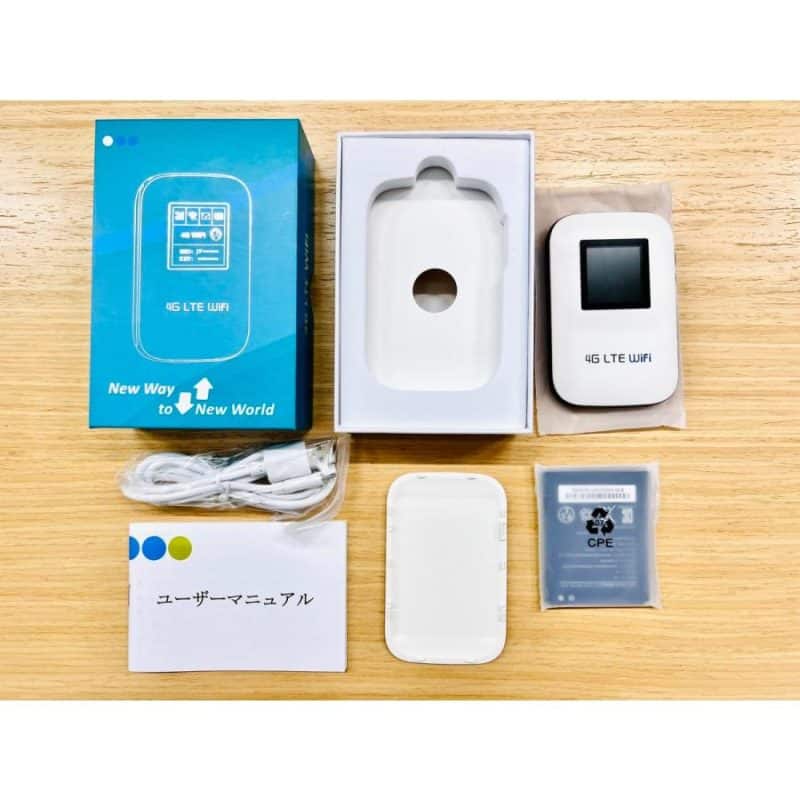
A pocket WiFi device is a portable WiFi router that uses a local SIM to create a mini personal hotspot for your group. It connects multiple devices instead of just your phone.
Book in advance and pick up at airports upon arrival. Costs around $6-10 USD per day plus a potential rental deposit. Can deliver to hotels too. Pocket WiFis provides a turnkey personal hotspot alternative to keep phones unchanged. Convenient for group travel.
Suitable For: Any WiFi device. Great for groups who need data access across laptops, tablets, phones, etc.
Where to buy Pocket WiFi for Japan: Japan Wifi Rental, Global Advanced Comm, WiFi Rental Japan
- Pros: Connects multiple devices, is convenient for group travel, and often has unlimited data options.
- Cons: Requires carrying an extra device, battery life limitations, and data sharing limitations.
V. Will My Local Network Work In Japan?
Your local network won’t directly work in Japan due to several factors:
- Different Network Frequencies: Japan uses different network frequencies than many other countries, including most of North America and Europe. This means use your cell phone in Japan won’t be able to connect to the local towers.
- Roaming Charges: Even if your phone could technically connect, roaming charges can be extremely expensive in Japan. Using your local plan would likely result in a hefty bill.
It depends on your carrier’s roaming support and your phone’s compatibility. A local Japanese SIM/eSIM is generally the most reliable option to use your cell phone in Japan if roaming doesn’t work out.
VI. Gigago eSIM – An Alternative To Get Internet In Japan With Your Cell Phone
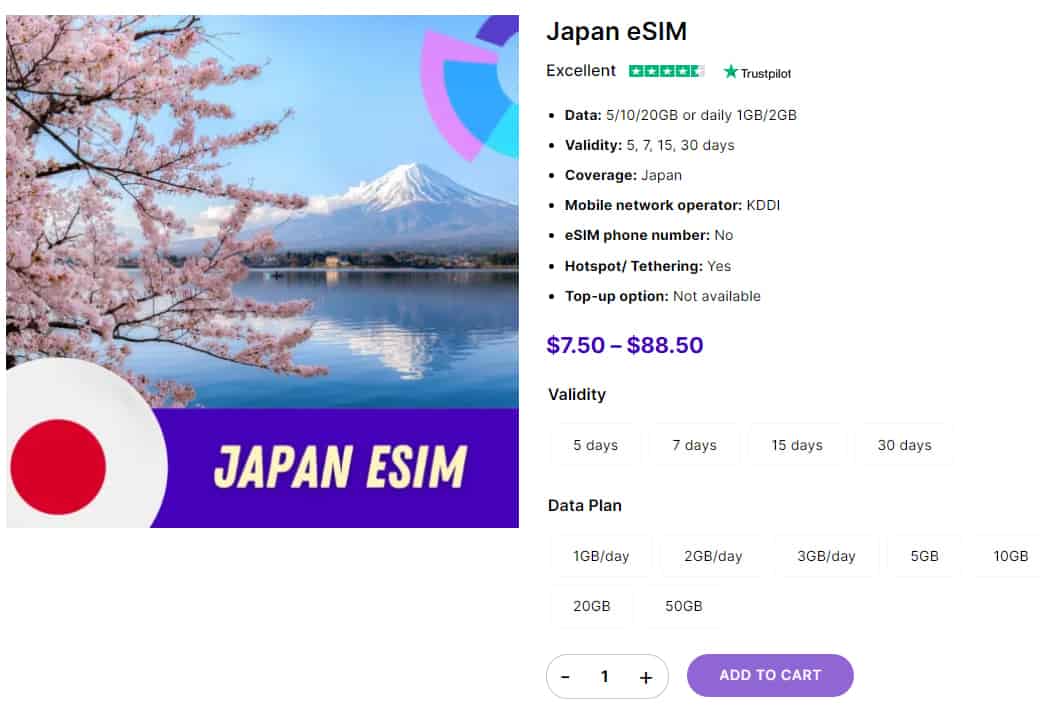
Beyond typical short-term SIM cards and eSIMs, there is another option worth considering for getting online in Japan with your device − Gigago Japan eSIM.
Gigago eSIM is a virtual SIM card that provides internet access in Japan for tourists. It is a convenient and affordable alternative to traditional SIM cards and roaming charges.
- Convenience: No need to swap physical SIM cards. Simply purchase the eSIM online and activate it on your phone.
- Flexibility: Choose from various data plans to fit your needs and budget.
- Coverage: Enjoy wide network coverage across Japan.
- Affordability: Often cheaper than roaming charges, especially for data-heavy users.
Overall, Gigago eSIM is a convenient and affordable option for getting internet access in Japan with your cell phone and for use cell phone in Japan. If you have an eSIM-compatible phone and plan to use a lot of data, it’s worth considering.
VII. Extra Tips To Use Cell Phone in Japan
Beyond getting connectivity set up properly, keep these additional cell phone tips in mind for visiting Japan and use cell phone in Japan:
- Download Transit Apps – Maps, train times, payment services and more. Vital apps to navigate.
- Translation Apps – Google Translate, iTranslate Voice, Microsoft Translator, etc. Great for navigating and ordering. Download Japanese language packs for offline use.
- Get a VPN – For enhanced WiFi security at cafes. Also may allow streaming services, video calls or accessing sites restricted abroad.
- Enable International Usage – Check account settings to enable international roaming capabilities if available and affordable from your home carrier. Disable if not.
- Unlock Your Phone – This allows inserting local SIM cards more easily if needed. Confirm before departure.
- Understand Coverage – Review carrier maps. Cities have great coverage but rural areas lose signals. Manage connectivity expectations when traveling remote areas.
- Bookmark Essentials – Internet basics like email, maps or translation apps. Have offline backups in case connectivity drops in remote areas.
These tips in addition to securing a reliable service, whether via eSIM, local SIM card or pocket WiFi rental, will enable safe, efficient usage of using cell phone in Japan.
VIII. FAQs about Use Cell Phone in Japan
Do I need to unlock my phone to use a SIM card?
For Japan SIM use, check if your phone is unlocked. Rental phones may be unlocked. Verizon/Sprint iPhones often are already.
Can I use SIMs from other Asian countries like China or Korea?
No, each country has different frequencies and standards. A Japan SIM/eSIM is required to connect to local networks. Other Asian SIMs may roam at high costs but won’t connect directly.
How can I determine if my phone works in Japan?
Check WillMyPhoneWork.net or search “[your phone model] Japan” to see if your device supports Japanese 4G/3G networks. Make sure it has the right radios before expecting cellular service there.
Are there other options to use cell phone in Japan besides SIM cards and eSIM?
You can rent a pocket WiFi router to connect all your devices via WiFi, avoiding cell service compatibility issues with your phone. This conveniently provides wireless access for non-phone devices like laptops and tablets too.
Do I also need home connectivity to rely on smartphone services abroad?
Possibly. International connectivity options may rely on concurrent home network access. Features like WiFi calls, messaging apps and Google Fi require a signed-in device online at home for full remote functionality abroad. Test apps beforehand.
IX. Conclusion
Getting cell phone and data connectivity in Japan as a traveler presents unique hurdles due to its distinct networks, frequencies, and technology with limited roaming. The best options for use cell phone in Japan are short-term nano-SIM cards, international eSIM plans, or pocket WiFi devices. Compare the pros and cons of each to pick what suits your specific trip needs, confirming coverage in travel regions. This enables GPS, train tools, calls, internet access, and vital travel apps while avoiding excessive roaming charges. With proper planning, getting connected anywhere in Japan affordably poses no problems for staying in touch and using cell phone in Japan.

